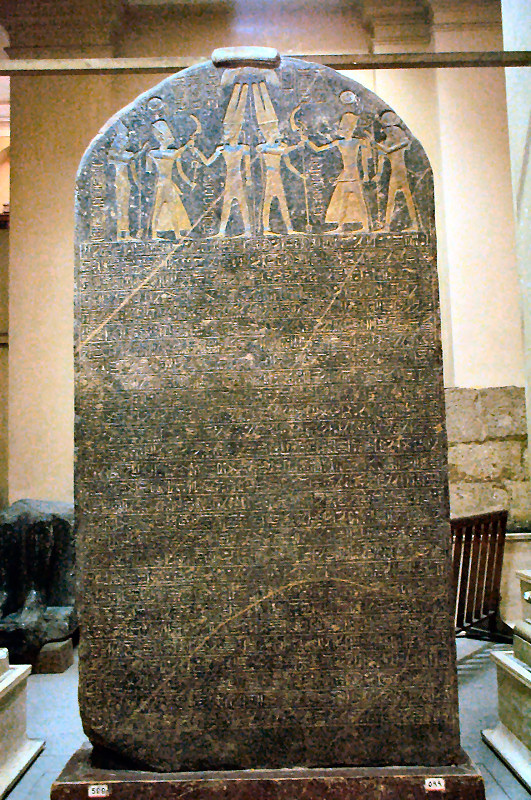Facts About Merneptah Stele
The Merneptah Stele, also known as the Israel Stele or the Victory Stele of Merneptah, is an important ancient Egyptian inscription. Discovered by Flinders Petrie in 1896 in Thebes, it is currently housed in the Egyptian Museum in Cairo. This stele primarily commemorates Pharaoh Merneptah's victory over the Libyans and their allies. However, the final three lines detail a campaign in Canaan, then part of Egypt's empire, and this section is especially noteworthy for containing the earliest known reference to Israel from ancient Egypt. It is one of just four Iron Age inscriptions that mention ancient Israel, alongside the Mesha Stele, Tel Dan Stele, and Kurkh Monolith.
The stele, created in the fifth year of Merneptah's reign, itemizes his military conquests, including the defeats of Ashkelon, Gezer, Yanoam, and Israel in Canaan. There has been some scholarly debate over the translation of the hieroglyphs in line 27. While the majority of experts interpret it as "Israel" a few have suggested alternative readings such as "Jezreel" or a reference to the "wearers of the sidelock" though these interpretations are not widely accepted. The mention of Israel has spurred various theories about the Israelites' identity, with some associating them with Biblical Israel and others considering them Canaanites or Shasu nomads.
The discovery and interpretation of the reference to Israel in the stele have generated considerable scholarly discussion regarding its significance and implications. Some scholars propose that the Karnak reliefs, which depict similar events, are connected to Merneptah's campaigns noted in the stele. However, this interpretation is not unanimously supported among Egyptologists. Despite these debates, the inscriptions and reliefs provide valuable insights into ancient Egyptian history, the geopolitics of the era, and the interactions between Egypt and its surrounding regions.

 Israel
Israel